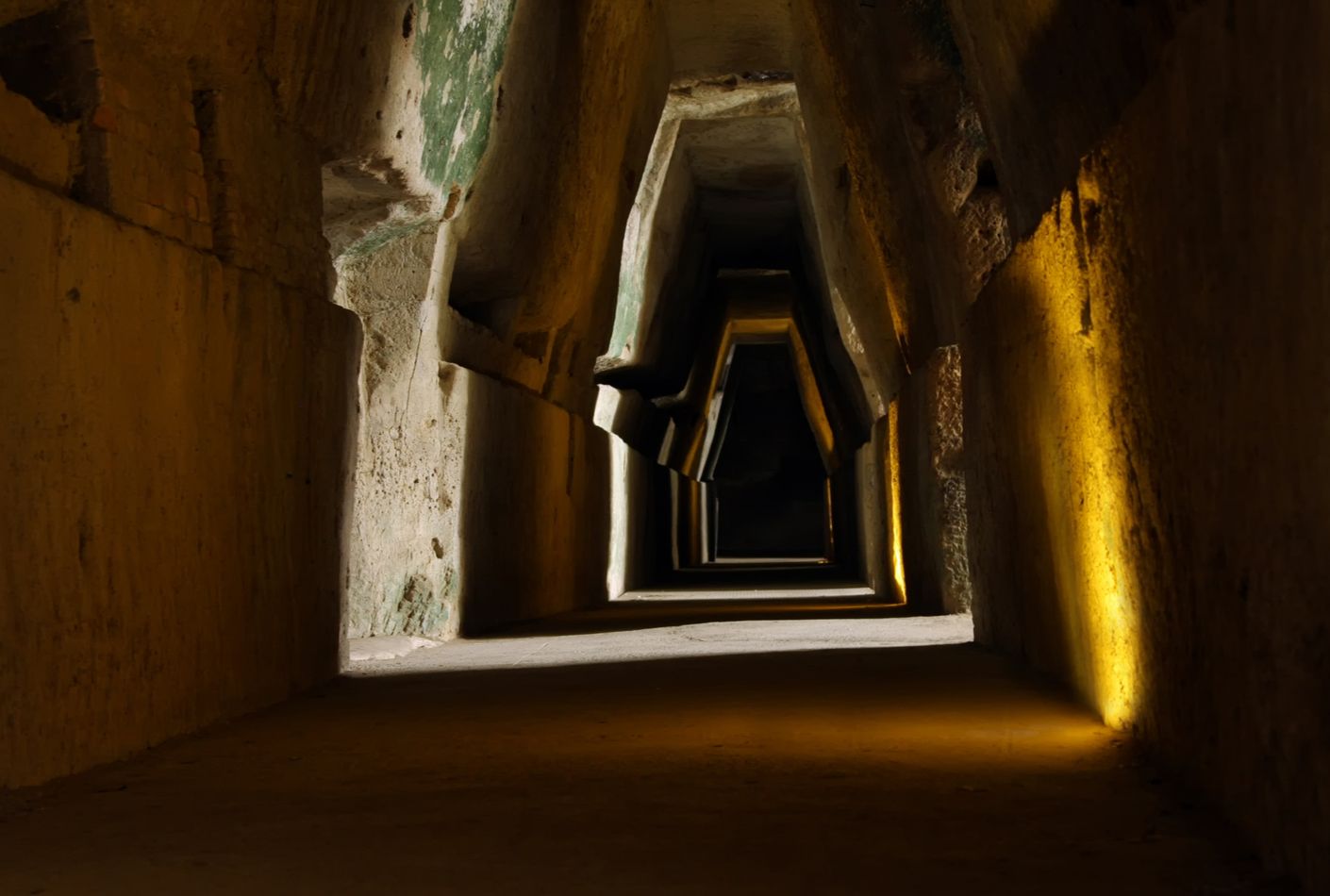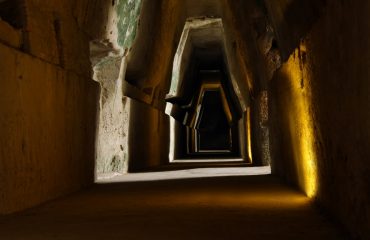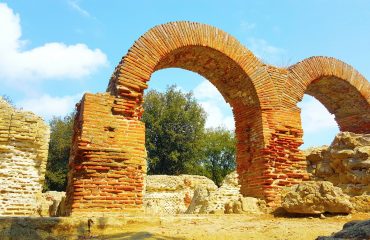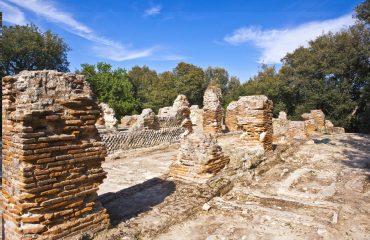THE BURNING PLAIN
Rione Terra, Baia & Cumae
- Explore the fields of fire, terrifying custodians of ancient remains, located on the surface of a massive volcanic caldera
- Roam through the underground ruins of Puteoli, once the Caput Mundi’s greatest port
- Take a peek into the legendary Cave of the Cumean Sybil, the Greek prophetess who revealed the fates of men
-
Category
-
Hobbies & Interests
-
DurationFull day
-
Destination
THE BURNING PLAIN
Rione Terra, Baia & Cumae
To the west of the Gulf of Naples, stretching from the hills of Posillipo to the ancient remains of Cumae, lies a broad strip of coastal land that has fascinated local populations for some 2,700 years. The Phlegrean fields, meaning fields of fire, are a gigantic volcanic caldera, consisting of twenty-four underground and underwater craters, as well as hissing fissures and fumaroles releasing jets of steam and sulfurous gases. Here the ground heaves and sinks every now and then, a terrifying indication that somewhere, deep below the ground, a supervolcano is gathering strength. Molten rock periodically fills and drains out of a large subterranean magma chamber, inducing the ground above to lift and then subside – a phenomenon known as bradyseism.
What drove mainland Italy’s first Greek colonies to settle in this perilous territory and Roman aristocrats to choose this place as an upscale holiday destination, is still unknown. Since ancient times, the Phlegrean fields have been associated with Hell and were believed to be the home of Vulcan, the Roman god of fire. Perhaps the therapeutic properties of its thermal waters, salubrious climate, fertile soil and exceptional seascape views, all contributed to the lasting popularity of this burning plain. Today impressive remains of ancient towns, villas, amphitheatres and temples, together with awe-inspiring natural phenomena, offer visitors an exciting opportunity to dig into Campania’s Greek and Roman roots as well as a tranquil, off-the-beaten-path respite from the crowds of the region’s popular attractions.
Begin your day with a relaxing ride along the coast to Rione Terra, a district of the city of Pozzuoli. This neighbourhood was completely abandoned in the 1970s, when authorities enforced mass evacuation for fear of an imminent bradyseismic catastrophe. Archaeological excavations carried out twenty years later to restore and revive the glories of what had once been the beating heart of a city with an ancient history, unveiled the enthralling fabric of a 2,000 year old Roman town. Indeed buried below the cluster of buildings you see today, lies a hidden treasure trove of ancient marvels. Your guide will lead you on an exciting subterranean adventure back to the time of Puteoli, a thriving town and for centuries Rome’s greatest port. Feel the excitement of stepping in the footsteps of Romans who once lived here as you walk along an underground street, pausing to take a look inside age-old bakeries, taverns and temples.
Back on the ground, head for Baia, once a fashionable residential resort, where the most prominent Roman personalities – Emperors Julius Caesar, Nero and Hadrian included – spent their leisure time and built luxurious summer palaces. The excavation site features impressive ruins of terraced villas, thermal structures and cisterns, evidence of the Romans’ remarkable expertise in the fields of building and engineering at this early date. More astounding still, as your guide will explain, is that what you see on the surface is only half the story. Due to bradyseism, an extensive portion of Baia’s buildings, mosaic floorings, columns and walls now survives underwater, creating a spectacular subaquatic archaeological park.
After some free time for lunch drive past Lake d’Averno, believed to be the gateway to the underworld, and reach the last stop of the tour. Cumae, dating back to the 8th century BC, is Italy’s oldest Greek mainland colony. According to myth, the town was founded by Daedalus who landed on this very spot after escaping from the labyrinth on the island of Crete. Here, in honour of the god Apollo, he is believed to have built a temple whose ruins can be admired to this day on the ancient acropolis. Remains of Roman villas, tombs, defensive walls, temples, roads, thermal baths and an amphitheatre are still standing, along with Cumae’s most famous attraction: the Cave of the Sybil. A 130-metre trapezoidal tunnel cut out of volcanic tuff leads to a chamber where the venerated Greek prophetess, endowed with the powers of divination by Apollo, is said to have revealed the fates of men. Here’s your chance to find out what lies in store for you!
- A Mercedes vehicle and professional driver at your disposal for a full-day excursion to Rione Terra, Baia and Cumae from Naples
- A full-day private tour with an expert licensed guide
- Entrance tickets to the archaeological site in Rione Terra
- Entrance tickets to the archaeological site in Baia
- Entrance tickets to the archaeological site in Cumae
- Tips
- Meals
- The order of the sites visited may change





